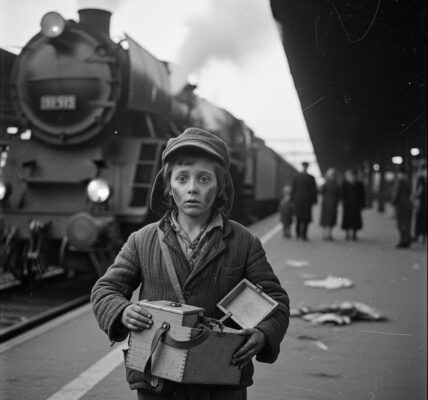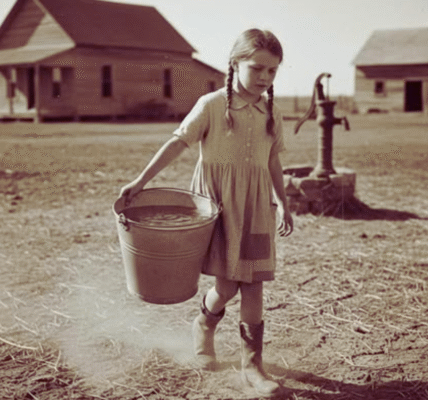The Liberation of Bergen-Belsen: Hell on Earth Revealed to the World

On April 15, 1945, in the final days of World War II, a detachment of British soldiers entered the Bergen-Belsen concentration camp in Lower Saxony, northern Germany. What they discovered that day remains one of the most horrific visions of the Holocaust and, for many of these young men, the most horrific memory of their lives. Unlike Auschwitz-Birkenau or Majdanek, there were no gas chambers or industrial killing plants. Yet the result was equally horrific: death from hunger, disease, thirst, and abandonment. Bergen-Belsen became an open-air morgue. More than 10,000 corpses littered the ground, piled high among the survivors too weak to stand. The smell of decay hung heavy in the air, and the silence was not one of peace but of collective agony.
The British soldiers, hardened by months of fighting across Europe, thought they were ready for the horror. But nothing could shield them from what they saw. One of them later wrote that the camp “smelled of death for miles, a smell that seeped into the skin and never left.” As they entered the gates, some soldiers immediately vomited. Others froze, unable to comprehend what awaited them. Before them, barely human figures stretched trembling arms, seeking help. A young woman, emaciated, her eyes burning with despair, grabbed a British soldier’s sleeve and whispered, “Don’t leave us…” This simple plea resonated with all of humanity, refusing to be abandoned to oblivion.
Bergen-Belsen was founded in 1940 as a prisoner-of-war camp. In 1943, it became a concentration camp run by the SS. Tens of thousands of Jews were imprisoned there, including prisoners transferred from other camps as the Soviet army advanced through Eastern Europe. In March and April 1945, “death marches” brought columns of exhausted prisoners to Bergen-Belsen. The camp, originally designed for a few thousand people, now housed over 60,000 people crammed into unsanitary barracks.

Hunger, epidemics of typhus, tuberculosis, and dysentery decimated the population. Every day, hundreds of bodies piled up unburied. The SS guards, themselves overwhelmed by the collapse of the Reich, allowed the situation to deteriorate to the point that Bergen-Belsen became a living cemetery. The Holocaust, in all its horror, was revealed not only through industrial planning of death but also through icy indifference, a conscious choice to let thousands perish slowly.
When British soldiers crossed the barbed wire, they discovered “a vision of hell on earth.” The ground was strewn with corpses in every position: some curled up, others frozen with open eyes, many reduced to translucent skin stretched over bone. In the center of this mass grave, survivors, too weak to stand, crawled among the dead, searching for something to eat: a crust of bread, a drop of water, or even an abandoned shoe that could serve as a pillow.
A British officer later reported: “It was not a normal silence, but a silence of exhaustion. Even the birds seemed to have fallen silent. Only the sound of the bulldozers and their groans could be heard.”
Bulldozers were indeed immediately requisitioned. Not for military purposes, but to accomplish the unthinkable: pushing thousands of corpses into mass graves. A typhus epidemic threatened to spread far beyond the camp, risking reaching the soldiers themselves and the surrounding civilian population. Every cleanup operation was a nightmare. The bulldozer drivers, some barely twenty years old, will never forget the sensation of bodies colliding, the dull thud of humanity reduced to nameless masses. A few burst into tears behind the wheel, but the work had to continue, as the health threat took precedence.
Of the 60,000 prisoners still in the camp, many were too weak to move. Some died within hours of liberation, unable to tolerate even a small amount of food or water. British doctors set up makeshift hospitals, providing milk, broth, and basic medical care. However, the health catastrophe surpassed all expectations. It is estimated that nearly 14,000 more survivors died in the following weeks, stricken by disease and malnutrition.
Yet amidst this despair, there were also moments of light. British soldiers recounted how some survivors, despite their weakness, managed to smile as their liberators approached. This smile, fragile yet radiant, was a victory over barbarity. It was proof that even after being stripped of everything, including their strength, these men retained a glimmer of dignity.
The liberation of Bergen-Belsen had a profound impact on British soldiers. Many never managed to shake the images etched in their minds. Some suffered nightmares for the rest of their lives, haunted by the faces of the dying. Military archives are filled with letters sent to families, describing the horror in halting words. “Mother,” wrote one soldier, “I have seen things I will never be able to tell. If there is a hell, it is here.”

For war correspondents present, such as the BBC’s Richard Dimbleby, the difficulty lay in finding the words. In his radio report, he described “corpses piled like logs,” a sight so unbearable that the BBC initially hesitated to broadcast the account, considering it too incredible to be true. Yet it was one of the first reports to open the world’s eyes to the reality of the Nazi camps.
Today, Bergen-Belsen is a place of remembrance. Mass graves, marked by simple headstones, commemorate the deaths of tens of thousands. Visitors walk in silence over a land that still holds so much suffering. This silence is not one of fear, but of contemplation—the same silence felt by survivors during their first free meal after liberation.
The history of Bergen-Belsen teaches us that the Holocaust was not only a planned process of death but also a series of abandonment, deliberate neglect, and prolonged suffering. Survivors testified that for them, liberation was a thin line between life and death. For the liberators, it was a brutal collision with the abyss of human suffering.
Over the decades, the story of Bergen-Belsen retains its undiminished power. It reminds us that barbarity can arise when humanity turns its back, when indifference prevails over compassion. Each anonymous body buried in these mass graves is a voice calling out to us: “Do not forget.”
Even today, amid the resurgence of anti-Semitism, Holocaust denial, and hate speech, the memory of Bergen-Belsen must be defended. The words “never again” are not a formula, but a duty.
The liberation of Bergen-Belsen on April 15, 1945, was not merely a military act; it was an encounter with the unspeakable, an unveiling of the Holocaust in all its horror. Survivors, brought to the brink of existence, found fragile dignity in the eyes of those who came to save them. The British soldiers, for their part, bore the mark of what they had seen forever, unwitting witnesses to an earthly hell.
Bergen-Belsen remains a symbol not only of human suffering, but also of resilience and remembrance. Every story, every image, every testimony helps prevent the disappearance of this past. Because remembering Bergen-Belsen is an affirmation of our shared responsibility to protect humanity from the darkness that always threatens to return.




